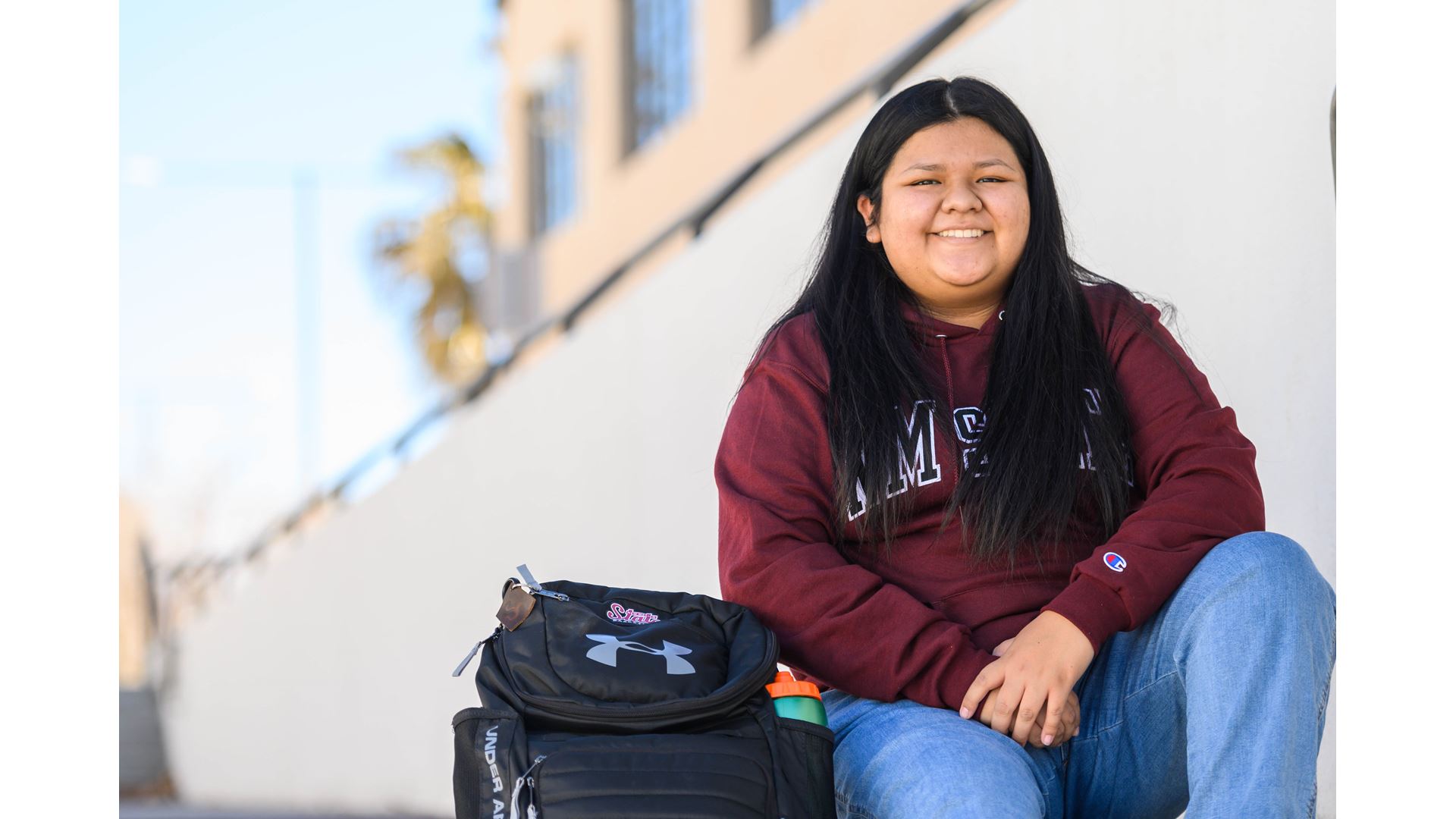For any student who leaves their rural hometown to start college in a larger city far away, the transition can be tough. Making new friends and finding a sense of belonging in a new place is not always easy – and for many Native American students, it’s a big shift to leave a deeply rooted, close-knit community.
Of New Mexico State University’s roughly 14,200 students, about 2.3 percent identify as American Indian or Alaskan Native. In the College of Agricultural, Consumer and Environmental Sciences, Indian Resources Development works to connect tribes, businesses, high schools, colleges and universities throughout New Mexico, building career pathways through camps, internships and economic development programs. NMSU’s American Indian Program also provides services and resources to help Native students acclimate to the diverse campus and achieve success in their studies.
Two Native students in the College of ACES found that sense of belonging through the mentors, clubs and organizations that turn a department into a community.
Rachel Ann Livingston
Diné student Rachel Ann Livingston grew up in the small community of Baahaali, also known as Bread Springs, New Mexico, just south of Gallup. Livingston, who expects to graduate in December with a bachelor’s degree in fish, wildlife and conservation ecology with an emphasis in aquatic ecology and management, said her strongly rooted Native background sometimes made it challenging to thrive as a student in the more urban setting of Las Cruces.
“When I came to NMSU, I had just moved five hours from home,” she said. “I had no other connections besides Dr. Colleen Caldwell, who hired me on as a work-study student in the fish lab.”
In Caldwell’s lab, Livingston met a new friend, another student with Diné roots, who invited her to join the student chapters of the Wildlife Society and American Fisheries Society.
“When I entered the classroom where the meeting was held, it was full of laughter – just like home,” she said. “Everyone knew each other, and even if they didn’t, they still welcomed you. Here is where I formed a lot of connections, and it made it easier to connect to other students in the classroom setting. The department and joining the student club made me feel a sense of community that I had been missing since moving away from home.”
Livingston was also able to connect with other Native students in her department – an easy task with the talkative bunch.
“Being able to connect with Native friends was great – they somewhat understand the struggles that you face,” she said. “Having someone understand you without really telling them seems a little more relaxing.”
As she looks ahead to her graduation, Livingston hopes to either work for the Navajo Nation Fish and Wildlife department or perhaps continue her education with a graduate degree in a new emphasis. Her work as a student employee with the American Indian Business Enterprise program – a partnership between NMSU’s Arrowhead Center and IRD – has sparked an interest in environmental economics that she’s considering exploring.
Whatever her path, Livingston wants to make sure she’s working outdoors and giving back to the young people in her community by helping them find their own career paths
Elizabeth Riley
Elizabeth Riley began her studies last fall as an environmental science major, planning to minor in Native American studies. An enrolled member of the Pueblo of Laguna, Riley traces her roots to the Jemez Pueblo and Navajo and Oneida tribes.
Moving across the state to start college during a global pandemic presented extra challenges for Riley as she navigated the freshman experience of living on campus in Las Cruces.
“It has been somewhat of a struggle to find other Native American students and establish a connection with them due to the pandemic, which cautions us to stay six feet apart,” Riley said. “The online meetings aren’t something I am used to, and being a student who would rather be in the class and interacting with the professors and other students, I have had to make quite the adjustment.”
Still, she said NMSU was her first pick when applying to colleges, in part because of the sense of belonging she experienced during her campus visit – something no other campus she visited seemed to offer.
Once on campus, Riley became a manager for the women’s basketball team and found a position as a student worker in the College of ACES Academic Programs office.
“Since I started working there in October, I have been able to find plenty of resources that have helped me tremendously, whether it be the study rooms in Gerald Thomas Hall, establishing connections with people in my program, or getting to know more about New Mexico State University and all it has to offer,” she said.
With her sights set on graduate school after she finishes her undergraduate degree, Riley said she sees young Native Americans like her as the problem-solvers of the future.
“I am the first one in my family to seek out a degree in STEM,” she said, “and I hope by doing so, I inspire not only the younger ones in my family but everyone around me.”

